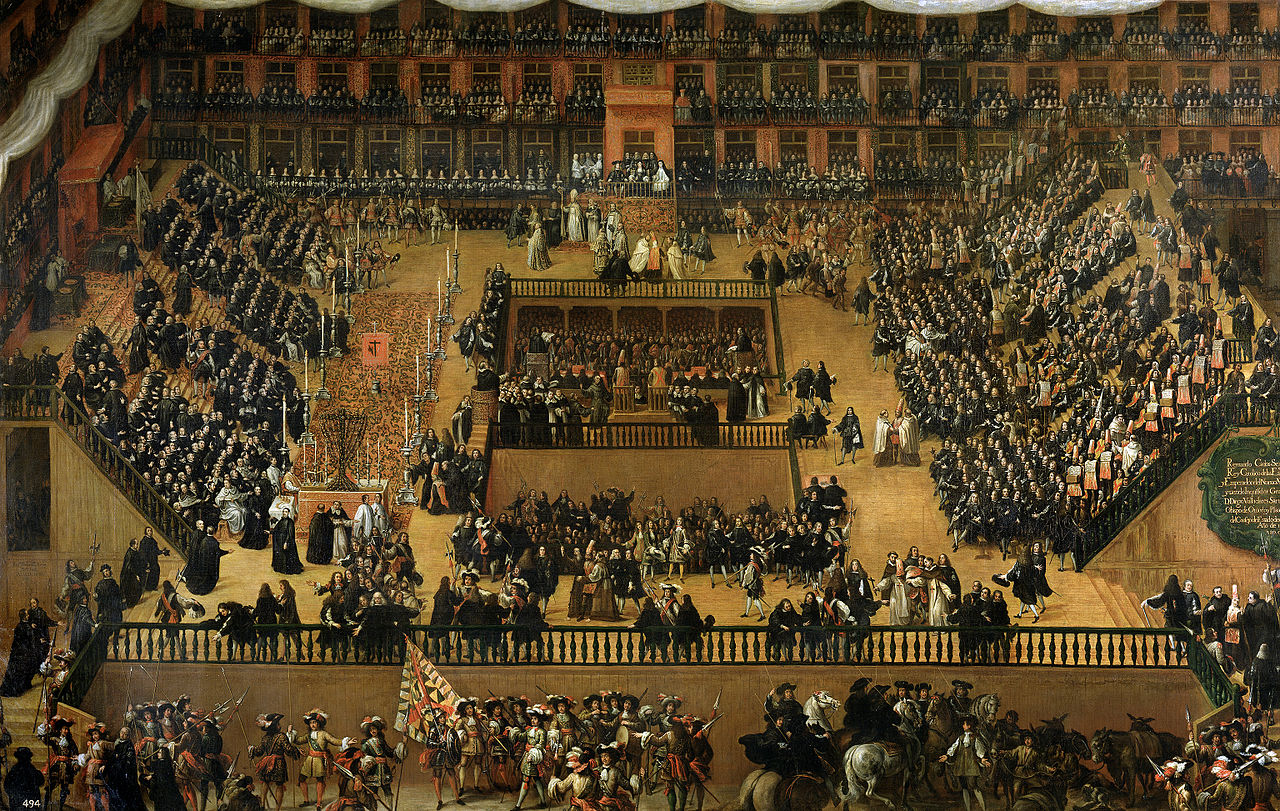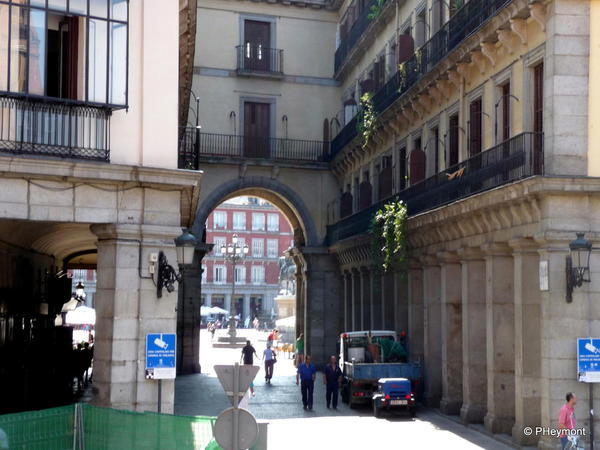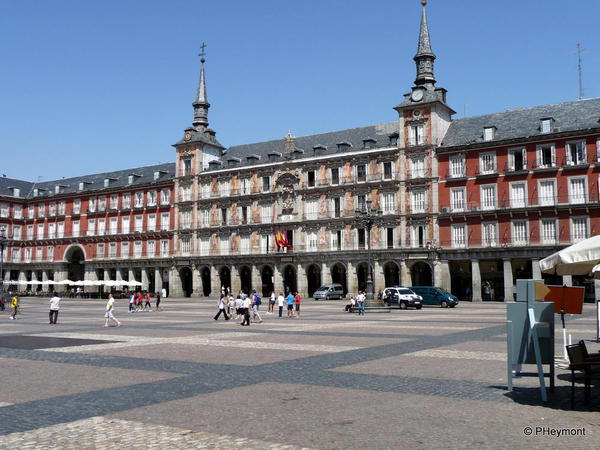Plaza Mayor, the big enclosed square at the heart of old Madrid, is no longer the center of the city's commerce and government as it was when it was first developed in the 16th century under Philip II and III, but it's certainly a place where visitors and locals flock to the restaurants and shops on the ground floor of its buildings.
And for special events (and not so special ones, like a coin-collectors' market) it can be quite busy and full—but not quite as busy and full as in this 17th century painting of crowds assembled in the plaza to witness public executions carried out by the Inquisition. Among the busier occasions these days is Madrid's annual Christmas market.
After a few centuries of building, fires and rebuilding, we're really looking at the 1790 version of the original, with lower buildings than before, and a series of arched entrances to the enclosed square.
The statue of Philip III was a 19th-century afterthought, during a period when it was the Plaza Real, or Royal Plaza. It's also gone under Plaza del Arrabal, Plaza de la Constitucion and Plaza de la Republica. But the 'Plaza Mayor' name seems safe for now.
Speaking of names, the building between the two towers below is the Casa de la Panaderia, or Bakery House, which was its original function in 1619. In the 1790 fire, it was the only major building that survived, and the architect used it as the model for reconstruction of the rest. It's home now to Madrid's official tourism offices.






Comments (0)